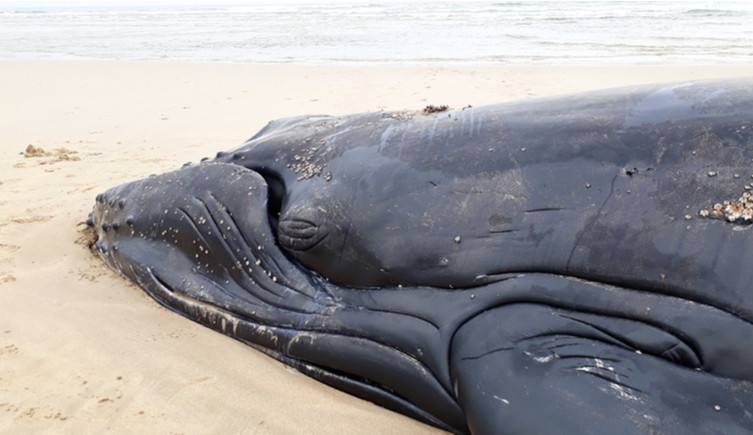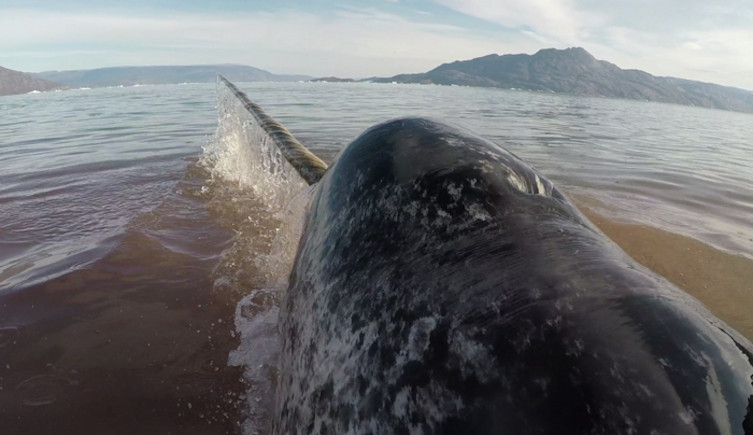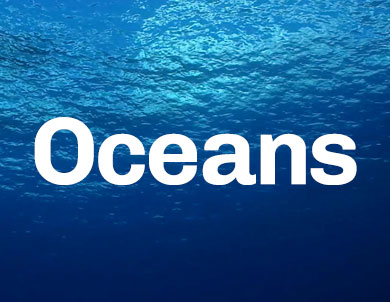Loud sound bursts are scaring cetaceans and causing them to flee into the depths of the ocean.
The noise is throwing their bodies out of balance and risking their health, amid growing concern over the impacts of anthropogenic noise pollution.

Loud noises can scare cetaceans into diving quickly, putting them at risk of exhaustion and decompression sickness. Image © Sergey Uryadnikov/Shutterstock
Loud sound bursts are scaring cetaceans and causing them to flee into the depths of the ocean.
The noise is throwing their bodies out of balance and risking their health, amid growing concern over the impacts of anthropogenic noise pollution.
The hunt for fossil fuels is pushing cetaceans to their limit.
A recent study found that when narwhals exposed to seismic air guns, which are used for surveying in the oil and gas industry, they immediately begin diving to escape from the noise. These high-intensity dives use much more energy than normal and put the marine mammals' health at risk.
Lead author Professor Terrie Williams says, 'They're swimming as hard as they can to get away, and yet their heart rate is not increasing. We believe this is because of a fear response in the narwhals. This affects how much blood and oxygen can circulate, and that's going to be problematic for the animals.'
'Not only is this reaction costly in terms of the energy needed for diving, the escape time will also take away from time spent foraging for food and other normal behaviours.'
The study, published in the journal Functional Ecology, provides some of the first evidence of how the physiology of cetaceans is affected by loud noise immediately after exposure.
It adds to a growing body of evidence that has linked marine noise to strandings, decompression sickness and behavioural changes in whales and dolphins, putting pressure on populations which already face a range of challenges.
Richard Sabin, the Museum's Principal Curator of mammals, says, 'Noise pollution is an increasingly pervasive problem that affects cetaceans, fish and other marine life. There are a whole range of marine species which rely on sound to find mates and food, navigate and communicate.
'It is of great concern because it adds to the other threats that cetaceans face, such as increasing sea surface temperatures, ocean acidification and chemical pollution. The problem of marine noise is there, it is growing, and it is having an effect.'

Strandings have been linked to the use of very loud devices such as anti-submarine sonar and seismic guns. Image © GS Penry/Shutterstock
Water is a much denser medium than air, presenting a range of challenges that terrestrial organisms don't have to face. This has forced underwater life to adapt their senses to take advantage of the different properties of the marine environment.
Compared to life on land, sight is less important as a sense because light is quickly absorbed by water meaning that below 100 metres 99% of all light entering the water has been absorbed. This has led to marine organisms developing their other senses, of which sound is one of the most important.
As water molecules are clustered more tightly together than the gases in air, sound can travel more rapidly and over greater distances. Whales and dolphins in particular make use of this feature for echolocation and vocal communication.
Some species, such as the humpback whale, can produce calls that can be heard hundreds or even thousands of kilometres from the whale which made them. While these calls can reach volumes of over 180 decibels, louder than a jet taking off, they are directed away from the body and are only temporary.
This is unlike anthropogenic noise pollution. Chronic sounds, such as the noise of a super tanker cargo vessel as it moves through the ocean, can last for over an hour and reach volumes of up to 200 decibels.
'Noise pollution is everywhere, but it's something of a hidden polluter as it's not necessarily that obvious to us,' Richard explains. 'While we're used to living with background noise, it's not that simple for cetaceans and many other marine organisms.'
'Sound is absolutely critical for many of these species, and so it presents a massive problem for them. It affects almost everything they do, because the use of sound has become such an important sense for these species that has been developed over millions of years.'
Anthropogenic noise can change a whale's behaviour, such as causing the marine mammals to feed less or to produce fewer calls. Shipping noise also cause whales to become stressed, with the build-up of stress related chemicals linked to growth suppression, lower fertility and poor immune system function.
Acute noise pollution can prove even more damaging. Military sonar can reach volumes of more than 200 decibels, while seismic air guns can reach up to 250 decibels - louder than the largest rocket ever built taking off.
At this level, the force of the vibrations is enough to kill zooplankton, with the number of dead plankton tripling within the surrounding kilometre of ocean. While larger animals are not killed directly by the sound waves, anti-submarine sonar has been linked to whale deaths caused by strandings and decompression sickness, which is caused by the animals surfacing too quickly.
The recent study reveals how cetaceans are affected in the moments immediately after a high-intensity sound burst.

Narwhals were fitted with sensors to measure their heart rate and other lifesigns as they dived. Image © Terrie M. Williams, UCSC
The researchers attached monitoring tags with suction cups to a group of narwhals in Greenland. These recorded their heart rate, breathing, movement and position as a ship with seismic airguns moved in the Scoresby Sound fjord.
After a sound pulse, the narwhals began to dive. Rather than making use of underwater gliding to save energy, as they would normally, the researchers observed the narwhals were swimming more and diving faster than normal.
This increase in exercise would normally cause their hearts to beat faster, but instead it led to the heart slowing down to less than 10 beats per minute.
The narwhals were breathing up to one and a half times as much as normal, with the researchers suggesting that the panic induced by the noise may have caused the diving response to become unbalanced.
As a result, the energy costs of diving increased significantly, with startled narwhals using over twice as much energy as animals in the control group.
As concern over marine noise continues to grow, the scientists hope to continue their research into long-term the physiological effects of sound bursts.
A group of researchers writing recently in the journal Science have raised concerns that loud noises will become more common in the future as the advent of the deep-sea mining era draws closer. They estimate that the noise of mining could exceed 120 decibels in an area of up to six kilometres around the area of operations.
At this level, the sound could cause behavioural changes in deep-diving cetaceans, such as beaked whales.
The worry about these impacts has led to calls for regulatory action on anthropogenic noise. While underwater noise is legislated against in some nations and is covered in part by treaties relating to wider marine pollution, there has so far been limited action towards specific international regulation.
At an industry level, some companies have taken steps to combat noise pollution with the development of mitigation technologies such as the use of an air nozzle to reduce the sound of propellers. However, the guidelines remain voluntary for the most part.
Research continues into the effects on anthropogenic marine noise as scientists build up a more complete picture of how our actions affect the oceans. It is yet another reminder of the impact humanity is having on our natural world.
'To preserve the acoustic world many marine organisms rely on, we need to have the same focus on noise pollution as we do on climate change,' Richard says. 'There's a real need to understand what the problems are, which species are being affected, and what we can do to mitigate these impacts.'

Find out more about why we need to protect the oceans, find themed events, and read about the pioneering work of the Museum's marine scientists.
Don't miss a thing
Receive email updates about our news, science, exhibitions, events, products, services and fundraising activities. We may occasionally include third-party content from our corporate partners and other museums. We will not share your personal details with these third parties. You must be over the age of 13. Privacy notice.
Follow us on social media